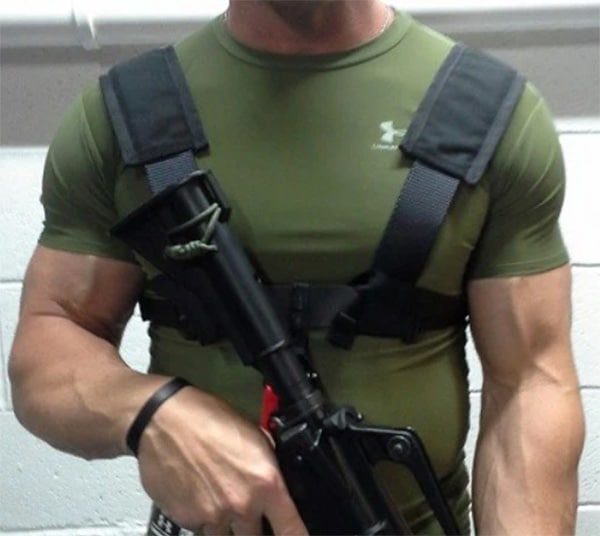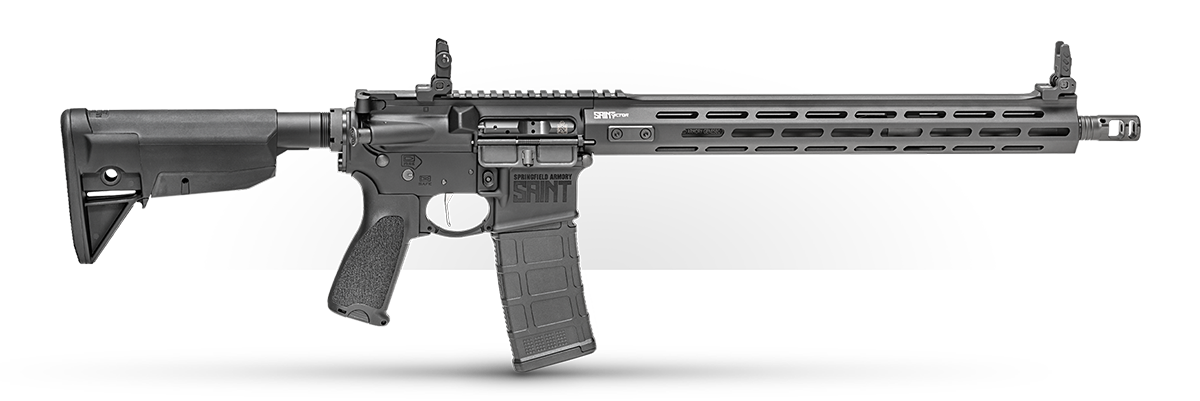In today’s review, Randall Chaney reviews the Chalker Sling made by Jersey Tactical Corporation. Developed decades ago by a retired U.S. Navy SEAL, the sling’s roots are based in the experiences and lessons learned in combat. The sling reviewed here is personally owned by the author and not a T&E item.
Dissatisfied with the deficiencies of three-point slings attached to his long guns, retired U.S. Navy Command Master Chief and SEAL Dennis Chalker constructed a rig that more closely met his needs in high-risk and close-quarters combat situations. In 1984, he invented the Chalker Sling.
Chalker, aka “Snake,” spent four years in the US Army in the 82nd Airborne during the early 1970s. After discharge, and a few unsatisfying jobs, he joined the U.S. Navy in 1977, becoming a SEAL and earning the much-coveted Special Warfare Insignia — the Budweiser. He saw combat in Haiti, Panama and El Salvador.
[Don’t miss Dr. Will Dabbs’ article on the Swedish K – the Navy SEALs’ banned submachine gun.]
Later, Chalker would be a founding member, or plank holder in Navy speak, for SEAL Team Six, the Navy’s Tier One counter-terrorist unit. In SEAL Team Six, he was deployed to the U.S. invasion of Grenada and fought in the furious battle at the governor’s mansion. His experience with combat loadouts encouraged him to customize his equipment. It was during his time in Team Six that he developed his signature sling.
The Details
Based on his travels into hostile territory, Chalker felt the standard three-point sling had the following shortcomings: lack of balance on the body, danger in a weapons-grab and interference with a gas mask. His design centered the long gun along the torso.
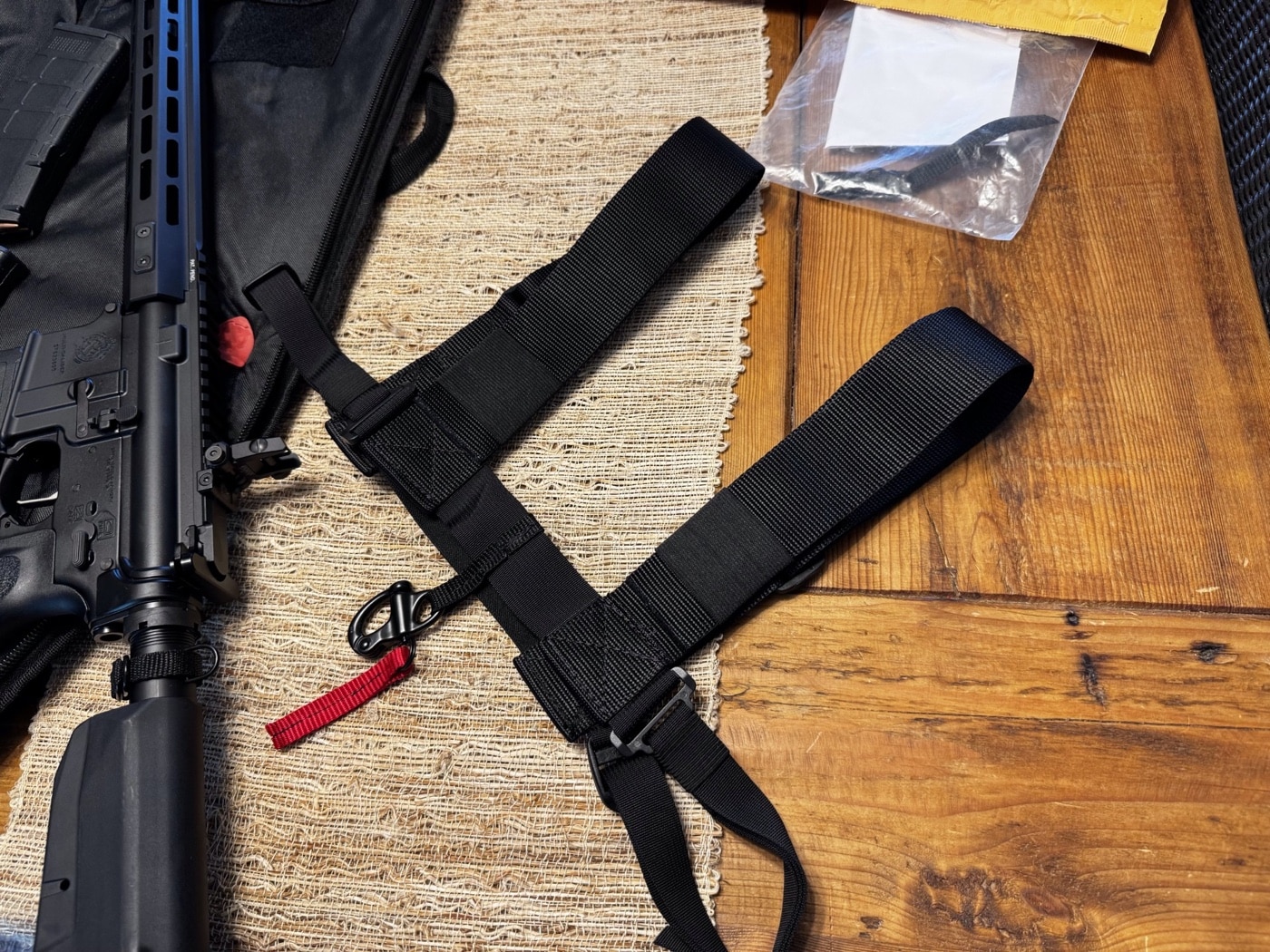
I purchased a Chalker Sling 2nd Generation from Jersey Tactical Corporation, owned by two law enforcement officers with SWAT experience. The price was $99.99. It arrived promptly and was intuitive in its setup right out of the package.
True confession here. I met Dennis Chalker at SWAT Round-Up International in Orlando, Florida, it seems like eons ago. He was with his friend and business partner Harry Humphries, himself a battle-tested Vietnam-era SEAL. We had an impromptu conversation during which I came off as a fan-boy. Chalker spoke about the pros of his sling since we were out at the firing range. They were good people.
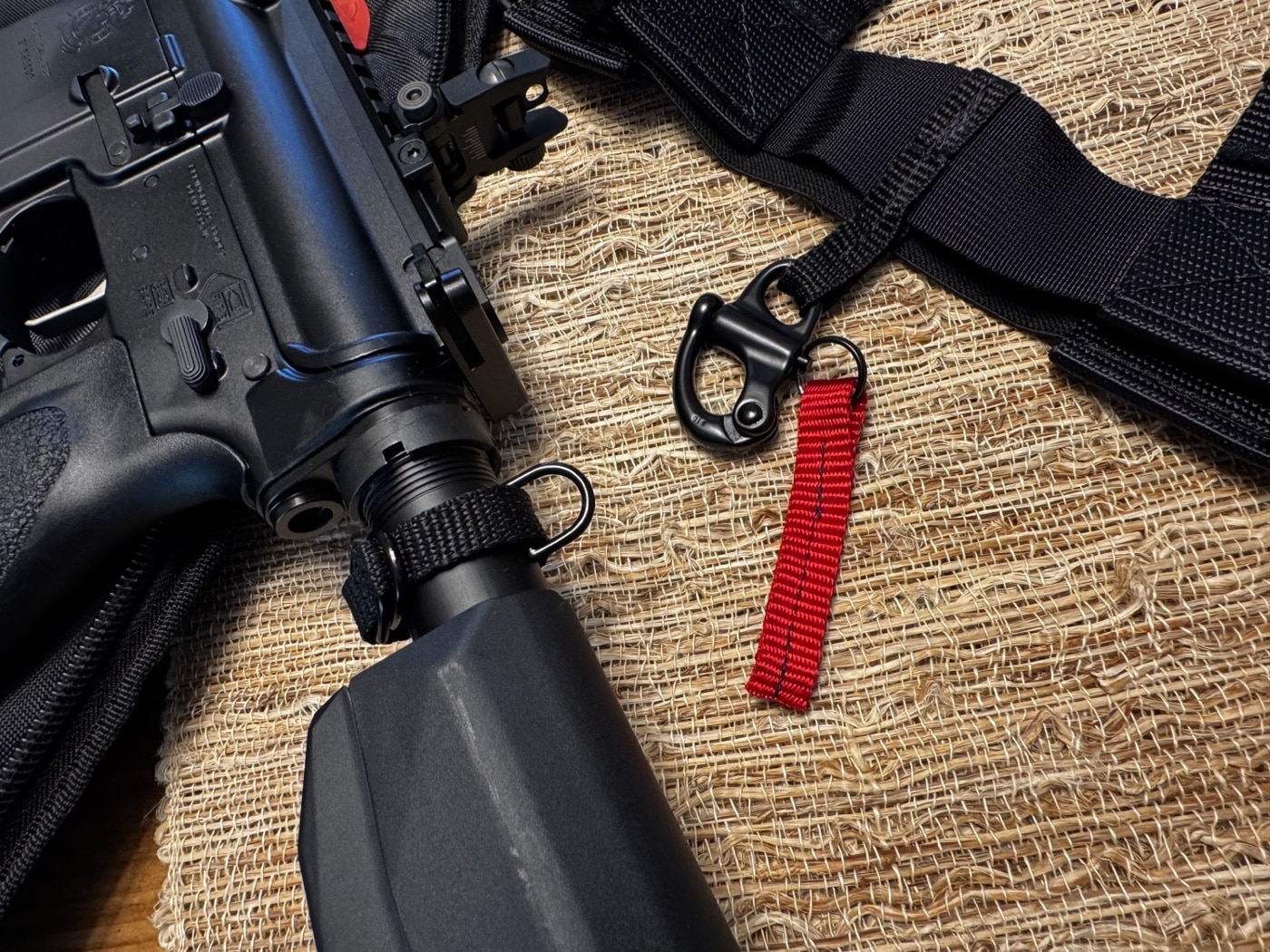
The Chalker Sling is harnessed over both shoulders and holds your rifle, shotgun, ballistic shield, or gas and baton launcher at a central spring-loaded swivel. This swivel is a quick release and supports the weapon by a separate standoff that attaches directly to the gun or shield. The swivel, also known as a snap shackle, can support 300 pounds of static weight.
This standoff is nylon webbing with a floating D-ring that inserts into the swivel. Chalker’s sling must be used with his standoff since it is critical to the release of the weapon. Once affixed, the standoff stays on the gun or shield, so each one has its own attachment. Chalker recommends securing the standoff end by stitching or with rubber heat-shrink tubing.
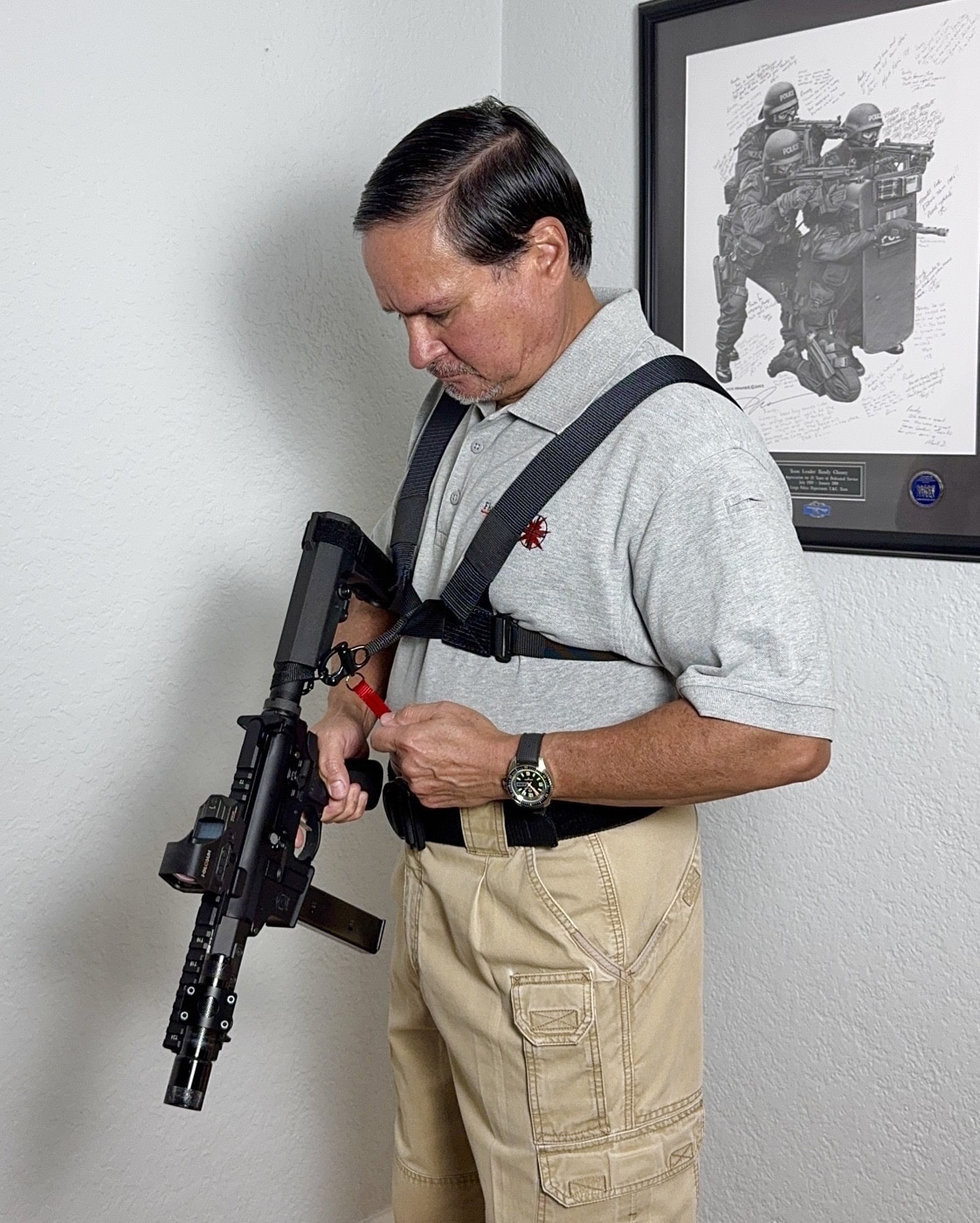
One advantage of the Chalker Sling is that you do not have to have individual slings for each weapon or piece of gear. With standoffs mounted on each, you can quickly transfer to the piece of equipment you need at the time you need it most.
In Practice
To don the sling, Chalker explains that it goes on “like a t-shirt,” over the head and arms through the loops. It takes a bit of adjustment to get the harness snug across the chest. He suggests getting another person to work the straps at the rear. I adjusted mine by taking the sling on and off a few times. I’m stubborn.
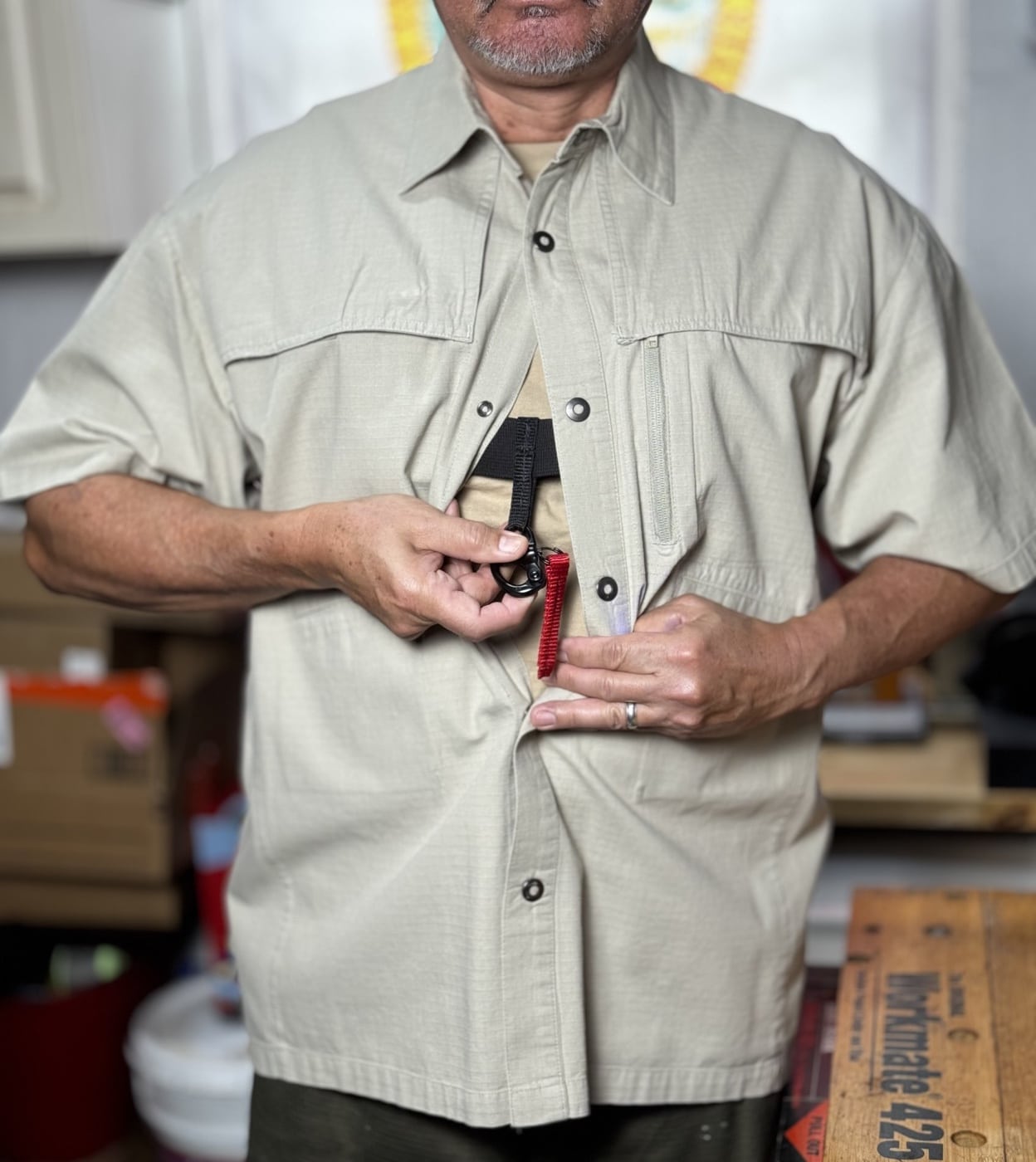
The sling can be worn over body armor with a simple adjustment of the straps. For patrol officers, it can be tucked under the uniform shirt. The quick release is accessed by unbuttoning or lowering the shirt’s zipper. I have been on protective details where street uniforms were worn, but rifles were close at hand and out of sight.
Chalker served as a contractor in Iraq from 2003 to 2007. His attire consisted of civilian concealment clothing with handguns and long guns at the ready if things got dicey. He wore the sling under his shirt and an outdoor vest. He also found a new mounting point for the sling.
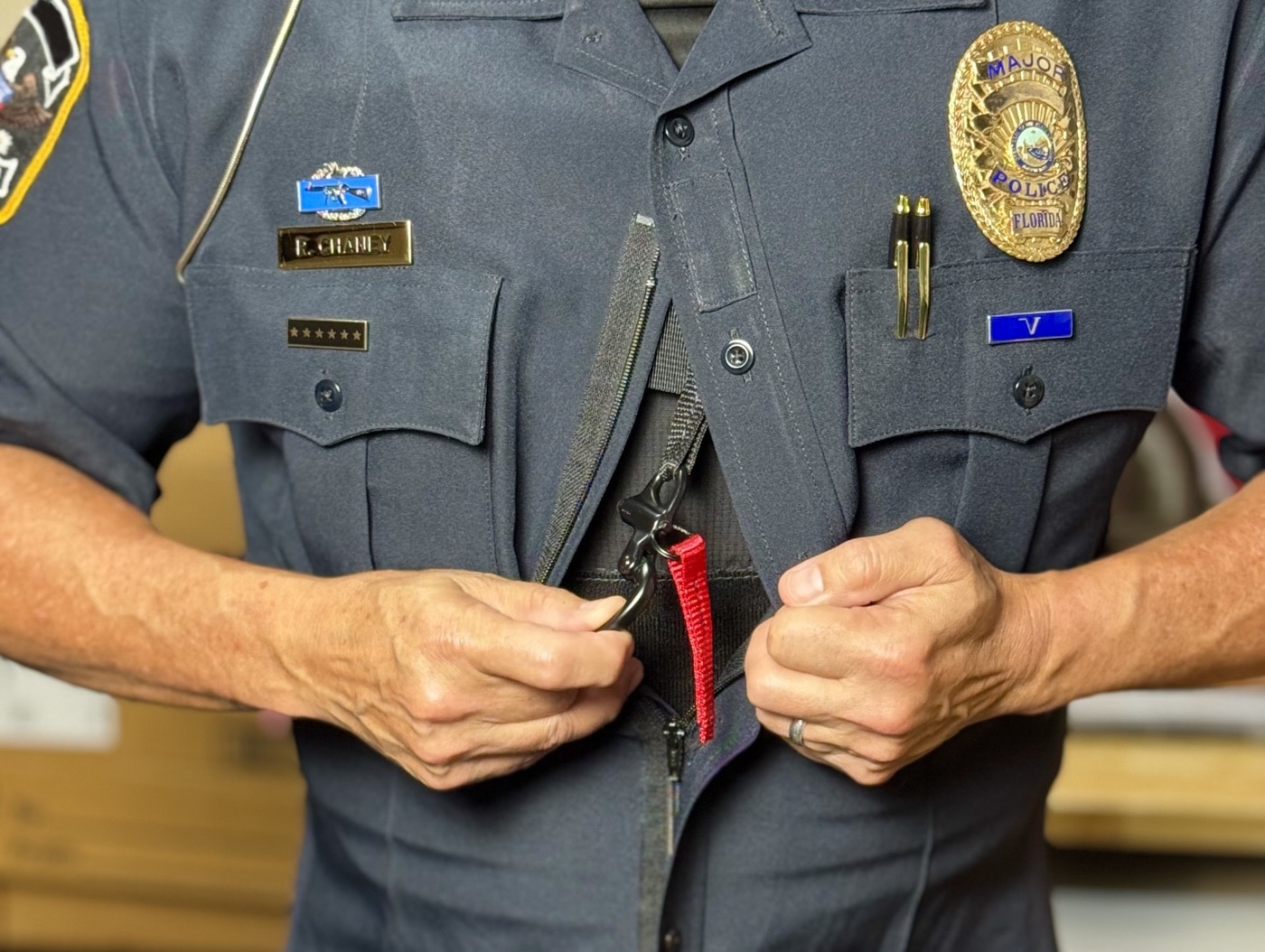
As the Chalker Sling began selling in the military market, there were requests for a MOLLE-compatible version that would mount to a plate carrier. Chalker delivered, with a smaller model that threaded in webbing and had snaps for closure. He said he tested variations of it while in the Middle East.
Hands-On
In my time as an active SWAT officer, I carried a submachine gun and later a rifle on three-point slings. The sub-gun sling was a true three-point with mounting hardware at the butt, mid-receiver, and forestock. The weapon could be snapped forward to detach at the receiver.
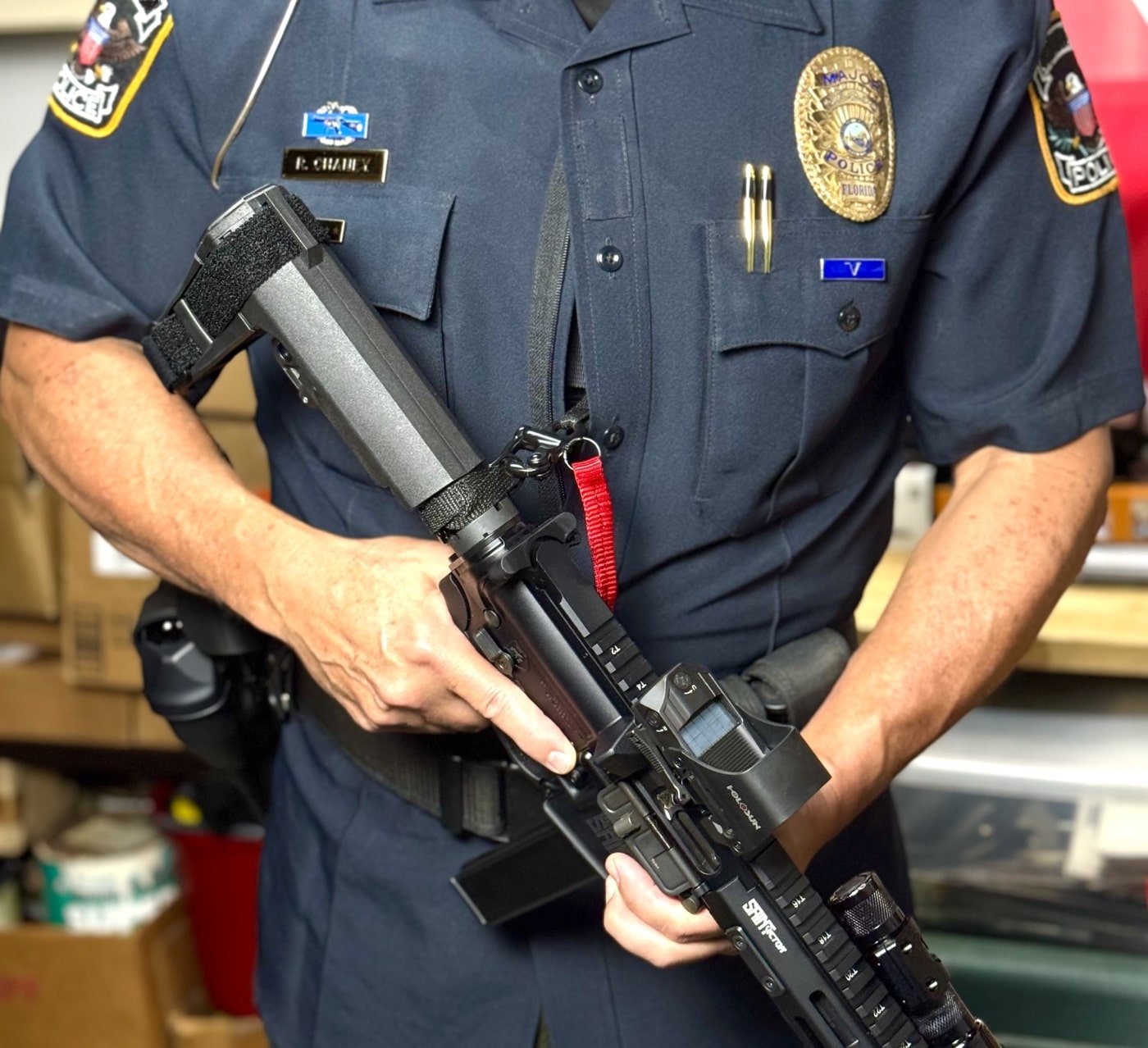
To address Chalker’s issues with the three-point: yes, it tended to hang the gun off to one side and put the weight on one shoulder. His sling spreads the load across both shoulders equally. Depending on your three-point sling, it can unseal a gas mask, something you don’t want at an inopportune time. We gassed houses at entry in the old days, and it would be a bit distracting if you became unmasked.
The most important argument against the three-point sling is that if someone were to try to control your long gun, a suspect pulling back sharply cinches the sling loop around your body, thus trapping you inside it. Sure, you can transition to your secondary and force them off, but it may take precious seconds, as you will likely be off balance.
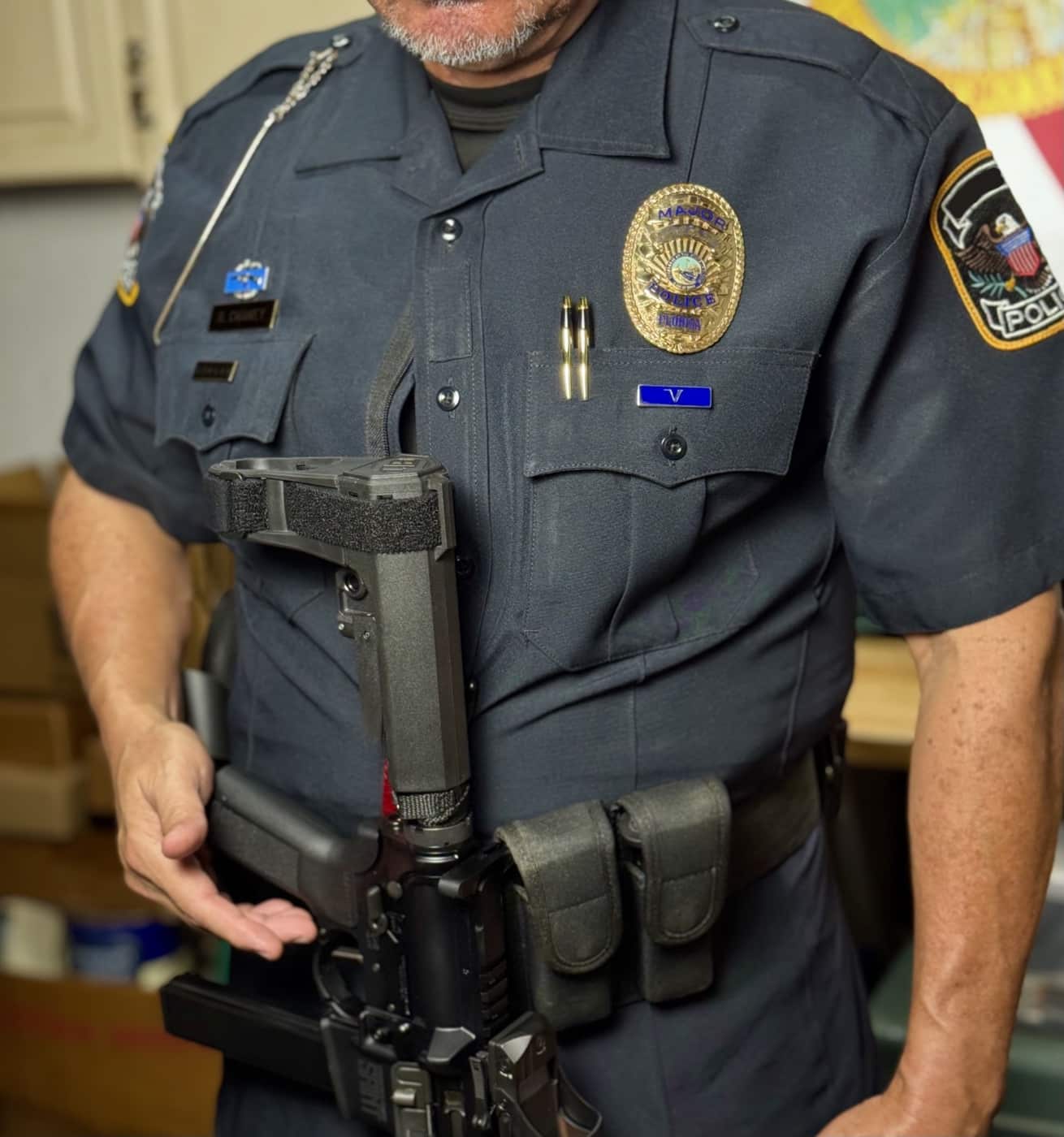
Chalker asserts that the operator needs only to pull the tab at the shackle on his sling, and the weapon goes free. It would now be easier, and certainly justified, to retake your long gun by force with your handgun. Either way, it is not the fight I want to be in.
Since the long gun hangs neutrally at your centerline, indexing it, according to Chalker, can be done with the support hand moving the gun aside or down and/or into a weapons retention catch or bungee on the belt or leg.

Chalker also discusses indexing a long gun at the high port position. He feels this keeps the muzzle aimed up in a safe direction and keeps the gun out of the way of your legs when you are moving. He suggests attaching hook-and-loop webbing to one of the shoulder straps of the sling to capture the gun.
While the Chalker Sling can make shoulder transitions of the long gun possible, I am not a proponent of transferring the hand grip and butt to the support side for maneuvering. While building clearing, we learned to cant the weapon and lean slightly to keep your sights and barrel out ahead of your vital areas when cornering.
Conclusion
All this said, the Chalker Sling is not for everyone at the local watering hole. It is purpose-designed for professionals who are expected to experience close-quarters combat. Having met him, I can assure you that Mr. Chalker definitely has the quiet gaze of a dangerous man. I would trust his judgment and experience when he makes something for battle.
Editor’s Note: Please be sure to check out The Armory Life Forum, where you can comment about our daily articles, as well as just talk guns and gear. Click the “Go To Forum Thread” link below to jump in and discuss this article and much more!
Join the Discussion
Featured in this article
Read the full article here



